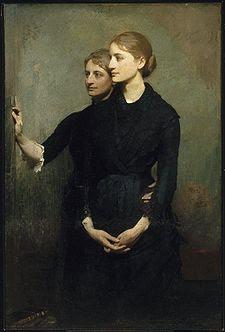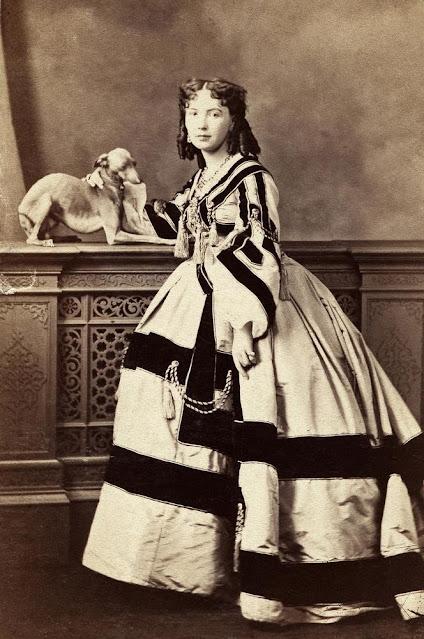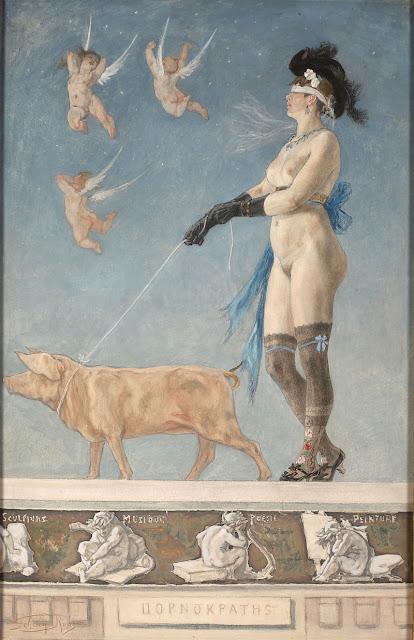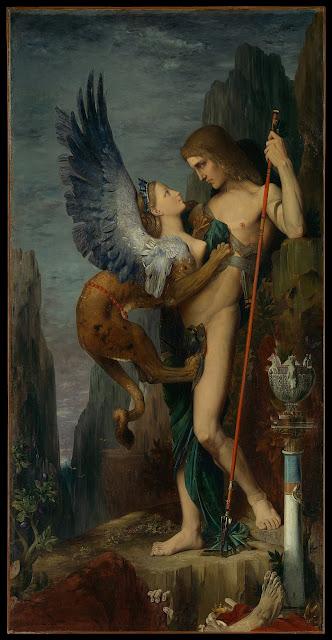Blimey, I can't believe it was back in 2016 that I reviewed William Rose's book The Strange Case of Madeleine Seguin! Well, that book was just one of a trilogy which concludes with The Freedom of the Villainous, an intriguing tale of twins, decadence and time travel...

Like William's previous works, this is a book concerned with the mind and perception, intertwined with decadent impulses and art, which makes it a jolly fine read indeed. It revolves around Marguerite and Mariana, beautiful twins who fascinate all who meet them but there is definitely something going on with their relationships with each other and everyone they meet...

The Sisters (1884) Abbot Thayer

The (in)famous Cora Pearl
The twins are pursued by the villainous Don Angel, the Marques de Mansura, who has a more sinister fixation on the twins and he travels to find them in the artist's studio in Whitby. From there, the story moves from England to France and even to Ancient Egypt as the characters seek out truth, beauty and corruption. On the way they meet Cora Pearl, a famous courtesan, who skirts between good and evil in the company she keeps and the parties she holds. We also meet Gustave Moreau (and his mum), Alfred, Lord Tennyson, Gustave Dore andFélicien Rops, the latter making any party a decadent affair...

Pornocrates (1878) Félicien Rops
Lawks. The reader moves with the action through the art of the period, from the truth-to-nature Pre-Raphaelitism of Edward, through to the sensual experiments of Rops and Don Angel, whose actions towards the twins definitely foreshadow decadent destruction of the end of the century. The book resolves in a race to save one twin from the other, with not the men who love her doing the rescuing but the model (and friend of Elizabeth Siddal) Jane Crawford (or 'Crawfy') racing across Europe trying to sort the truth from the lies.

Oedipus and the Sphinx (1864) Gustave Moreau
In the end, it is about the realness of people and situations and how we can become obsessed with image and our own imagination. Mariana is mistaken for Marguerite, and by Tennyson as his Mariana of the South. Crawfy is surprised and delighted when someone actually calls her Jane, underlining that things are not as they seem and often what we think is real is not. The supernatural element of the story begins with Whitby, where unexpected arrivals can often be disastrous and dangerous. The ability of certain characters to time shift through costume and scenery is disorientating to the innocent and brings both pleasures and pain. At the center there is a conversation about the duality of human nature and the danger of people, even those you love. If you are after a challenging and enjoyable read, this is definitely for you, especially if you wish to escape to 19th century France and possibly, with the right company, beyond...The Freedom of the Villainous by William Rose is available now through all good bookshops. More information on this and William's other books can be found here.

